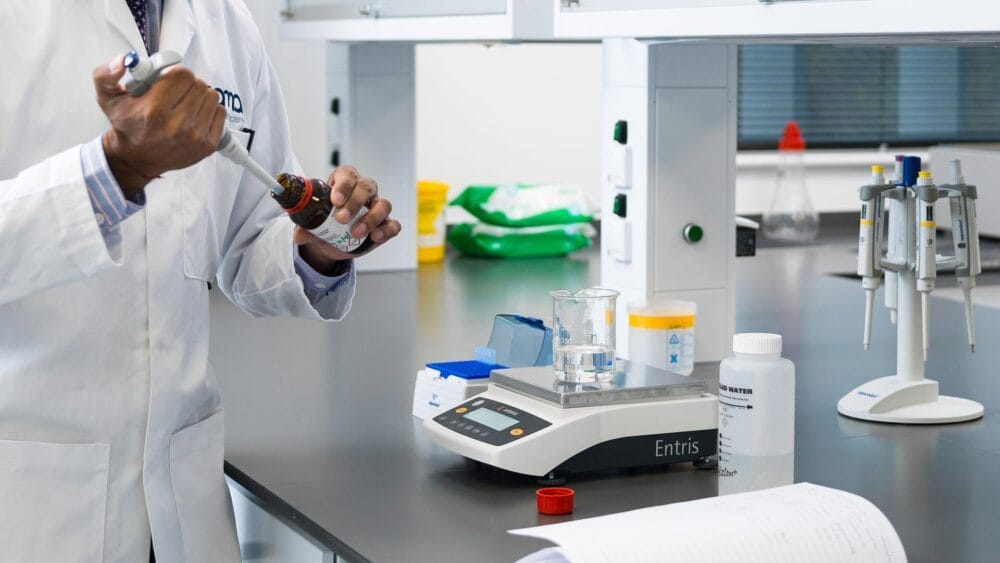Posted
19th April 2021
Research
In our latest article, we discuss how hand and surface hygiene interventions can help to keep office workers safe from transmissible infectious diseases.
The COVID-19 pandemic has highlighted the challenges of communal workspaces in the context of the transmission of infectious diseases. Co-workers often spend long periods of time in close proximity, usually with limited access to hand and surface hygiene materials.
Before the COVID-19 pandemic, there was convincing evidence that we needed to do more to keep communal workspaces free from transmissible infectious diseases. Even more so now, given the reports of COVID-19 outbreaks in communal workplaces.

How infectious diseases spread in the workplace
Contaminated hands and surfaces can spread infectious diseases (including the SARS-CoV-2 virus that causes COVID-19) in home and workplace settings.
We’ve all been there, sat next to our colleague with a cold, and the next thing you know you’re reaching for the tissues!
Several studies have shown that improving hygiene in communal offices reduces the risk of spreading transmissible diseases.
Studies using bacteriophage markers:
Some studies have used bacteriophage markers. These small micro-organisms are viruses that infect bacteria but are harmless to humans, and can be used to model the spread of viruses.
- One study showed that a surface and hand hygiene intervention reduced the level of bacteriophage contamination of surfaces and staff hands in a shared office by 85%.
- A follow up study used mathematical modelling to translate this reduction in bacteriophage contamination to a projected reduction in infection transmission risk. This study concluded that surface disinfection also resulted in an infection risk reduction of 15% for rotavirus, 16% for rhinovirus, and 33% for influenza, and that surface and hand hygiene combined resulted in an infection risk reduction of 59% for rotavirus, 61% for rhinovirus, and 88% for influenza.

Employers need to take additional steps to ensure staff feel safe to come back
We know that workplace exposure is a significant risk for COVID-19, hence the work at home order in the UK and elsewhere in the world to help manage the pandemic. Additionally, we know that staff perceptions of safety are a vital part of reopening communal offices. Research carried out in Canada shows that employers need to take additional steps to ensure that staff feel safe enough to come back into communal offices.
What steps should employers take?
To provide a safe office for staff, employers should:
- Ensure that hand and surface hygiene products are made available throughout the office space. They should be made accessible and kept in a place where they can be used conveniently. Alcohol gel and disinfectant wipes are the easiest and most effective products to use in an office environment.
- Ensure that office workers who are ill do not come to work (you’d be amazed how often it happens)!
Overall, the COVID-19 pandemic has prompted important questions about ensuring safe communal offices, and highlighted the need for companies to facilitate effective hand and surface hygiene to keep their communal workspaces free from transmissible diseases.
For more information on how we are making workplaces safer, take a look at our Safe Offices page.
SHARE THIS ARTICLE
Tags
Latest News
Introducing HEXI HUB: A seamless transition in our product line
We’re pleased to announce an update to our product offering…
Innovative solutions for tackling Carbapenemase-producing Enterobacteriaceae (CPE) at King’s College Hospitals
King’s College Hospital NHS Foundation Trust, one of London’s largest…
Gloves Off: reducing unnecessary plastic waste during environmental cleaning and disinfection
In this blog, Dr Phil Norville discusses the momentum-gaining ‘Gloves…
Gloves Off: Navigating SDS sheets and skin safety claims in environmental decontamination products
In this blog, James Clarke (Head of R&D, Science &…




